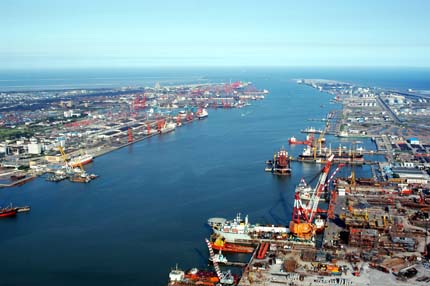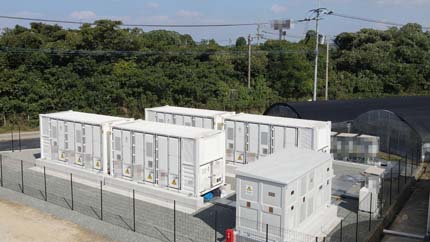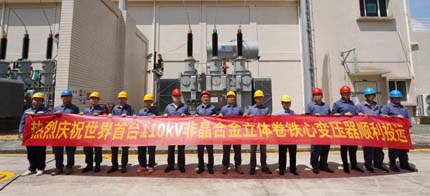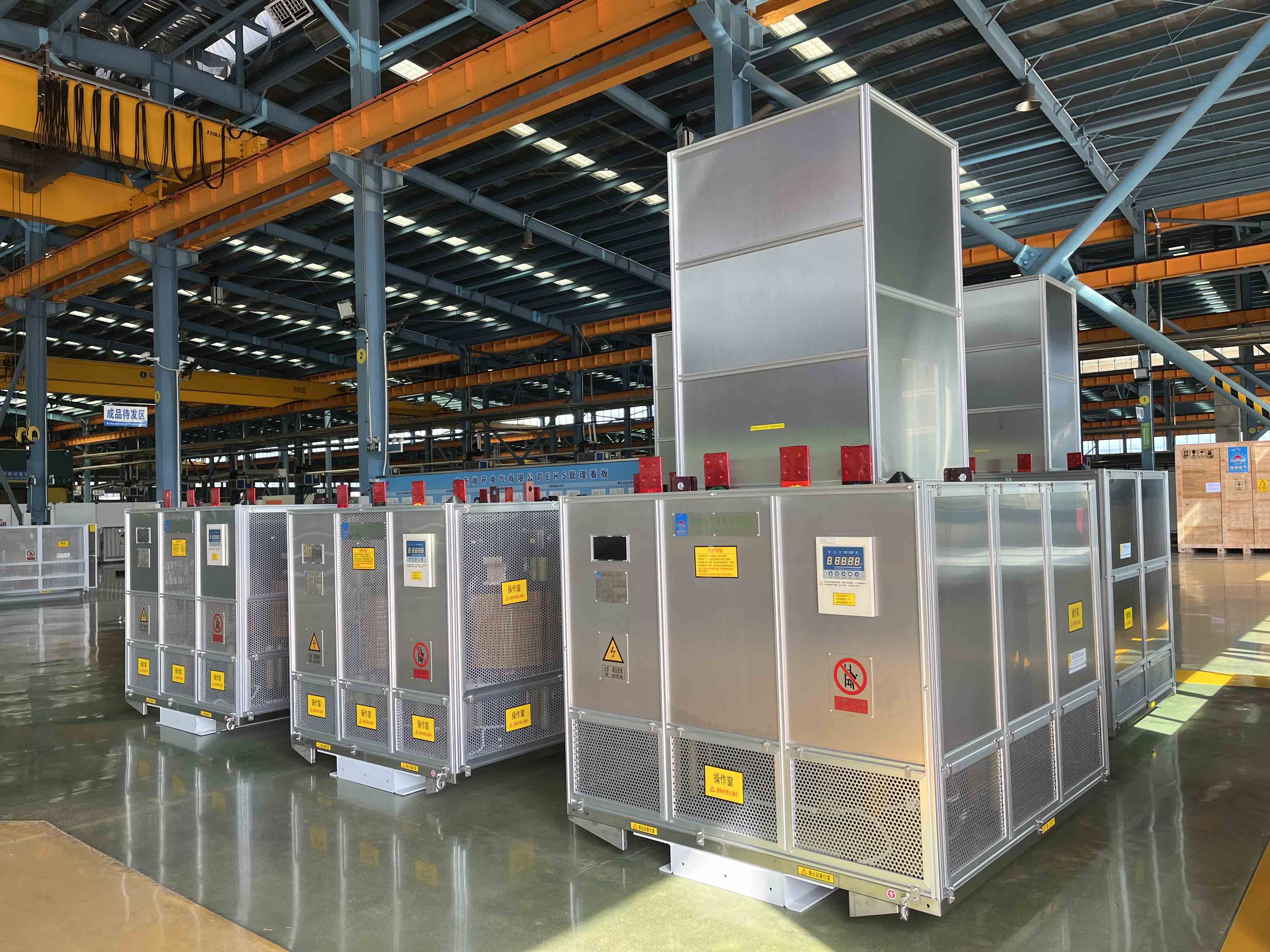Service Appointment & Enquiry
Customer Service Tel: 4000-0750-68
Service Appointment & Enquiry
Customer Service Tel: 4000-0750-68
At the beginning of February, we held film meetings in East China and Central China to study the issue of accelerating the shutdown of small thermal power units and the scale of power construction in the next three years. This meeting was held very well. The main sign is that the comrades attending the meeting did not focus on the scale and projects, which shows that the understanding of the implementation of the scientific development concept in various places is gradually deepening. In my opinion, the current main task of the electric power industry is to speed up structural adjustment and change the mode of growth, with particular emphasis on shutting down small thermal power units, improving power generation dispatching methods, and achieving energy conservation and emission reduction goals. Taking this opportunity, I would like to briefly introduce the basic ideas for the development of my country's electric power industry during the "Eleventh Five-Year Plan".
Let’s talk about the achievements of the “Tenth Five-Year Plan” first. It can be said that the "Tenth Five-Year Plan" is the period of the fastest development of my country's electric power industry. In the early days of the founding of the People’s Republic of China, that is, in 1949, my country’s installed power capacity was only 1.85 million kilowatts. It took nearly 38 years in 1987 to reach 100 million kilowatts of installed capacity; and then it took another 8 years to achieve the installed capacity in 1995 200 million kilowatts; after that, it took another 5 years to achieve 300 million kilowatts of installed capacity by 2000; in 2004, the installed capacity increased by more than 50 million, 400 million in 2004, and 500 million in 2005. In 2006, our preliminary statistics put into operation more than 100 million kilowatts, which means that by the end of 2006, the installed capacity will reach 600 million kilowatts. Such a fast growth rate is unique in the history of the world's electric power industry.。
During the "Tenth Five-Year Plan" period, remarkable achievements were made in the construction and development of my country's electric power industry. First, the installed capacity of electric power and power generation both rank second in the world, maintaining a relatively high growth rate. The average annual growth rate of power generation installed capacity is 10.1%, and the average annual growth rate of power generation is 12.8%, which basically meets the needs of economic and social development. Second, the power grid construction has been further strengthened. By the end of 2005, the national transmission lines of 220 kV and above had reached 252,000 kilometers, and the capacity of substation equipment had reached 870 million kVA; third, remarkable achievements had been made in the environmental protection of electric power. 32%; by the end of 2005, the capacity of flue gas desulfurization units built and put into operation nationwide will be about 55 million kilowatts, and by the end of 2006 it will exceed 130 million kilowatts; The level has been raised from 220 kV to 500 kV and 750 kV. The equipment and technology of hydropower projects have reached the international leading level. The main thermal power units are 300,000 kW and 600,000 kW, and the parameters have reached supercritical and ultra supercritical. Now a single unit has been built Units with a capacity of 900,000 kilowatts and 1,000,000 kilowatts; Fifth, phased results have been achieved in the reform of the power system. Realized the separation of factories and grids, restructured state-owned power assets, established a market supervision agency, implemented a new electricity price mechanism, and launched a pilot project of bidding online in the Northeast.
Although the development speed of the power industry during the "Tenth Five-Year Plan" period was relatively fast and the situation was relatively good, there were still some problems. The main manifestations are: first, the structure is unreasonable, and the tasks of structural adjustment and industrial upgrading are relatively heavy; second, the power dispatching method is relatively backward, and now it is basically one size fits all, regardless of the size of the unit, regardless of the requirements of energy consumption and environmental protection. When power generation is used for hours, some places even abandon hydropower to take care of thermal power units; third, the construction of the power grid is relatively lagging behind, the construction of the power grid and the power supply do not match, and the construction speed of the power grid does not meet the needs of the development of the situation; the fourth is the disorderly construction of power stations. The phenomenon still exists, especially the serious violations in the past few years. Although it has improved after cleaning and rectification, the problem has not been fundamentally resolved; fifth, the quality and safety hazards of power construction cannot be ignored.
The development of the electric power industry in the "Eleventh Five-Year Plan" should be guided by the two strategic ideas of scientific development concept and building a harmonious society. The basic principles are to improve energy efficiency, protect the ecological environment, strengthen power grid construction, develop hydropower in an orderly manner, and optimize the development of coal power. Actively promote the construction of nuclear power, moderately develop natural gas power generation, encourage new energy power generation, drive technological progress in the equipment industry, strengthen international cooperation, and deepen institutional reform. This is also the basic policy orientation for the development of my country's electric power industry during the "Eleventh Five-Year Plan" period.
1. About Improving Energy Efficiency
Compared with the international advanced level, the energy utilization efficiency of my country's electric power industry has a large gap. Take power generation as an example, the average coal consumption per kilowatt-hour in developed countries is 335 grams, in my country it was 392 grams in 2000, and in 2005 it was 370 grams. According to the "Eleventh Five-Year Plan", by 2010 it will be reduced to 355 grams. If calculated according to the annual power generation in 2005, every 1 gram reduction in coal consumption for power supply can save 2.05 million tons of standard coal per year nationwide. If by the end of 2010 the coal consumption for power supply is reduced by 15 grams compared with 2005, then we can save 45.42 million tons of standard coal throughout the year. Further, if it reaches the international advanced level of 335 grams, calculated according to the electricity in 2010, 105.98 million tons of standard coal can be saved in the whole year, and then the goal of energy saving and consumption reduction proposed in the "Eleventh Five-Year Plan" will be guaranteed.
Regarding the power consumption rate of plants, the level of major advanced countries in the world is 4%. Ours was 5.87% last year, and it will drop to 4.5% by the end of the "Eleventh Five-Year Plan". If the power consumption rate of the factory is reduced by one percentage point, 9.25 million tons of standard coal can be saved based on the total electricity consumption last year. If the power consumption rate of the factory is reduced to 4.5% according to the requirements of the "Eleventh Five-Year Plan", then by 2010, 18.26 million tons of standard coal can be saved. 24.93 million tons of standard coal can be saved.
The line loss of my country's power grid at the end of the "Ninth Five-Year Plan" was 7.81%, and it dropped to 7.18% at the end of the "Tenth Five-Year Plan", while the world average was 6%. A decrease of 0.18%. If the line loss is reduced by one percentage point, 9.25 million tons of standard coal can be saved based on the electricity at the end of last year. If it reaches the international advanced level, 13.33 million tons of standard coal can be saved for the whole year.
To improve energy efficiency in the electric power industry is to actively adopt advanced technologies, promote the use of high-efficiency and energy-saving power generation and transmission equipment, improve power generation scheduling methods, implement energy-saving and environmental protection scheduling, and accelerate the elimination of small thermal power units with low energy utilization efficiency, high coal consumption for power generation, and heavy pollution emissions As well as old power transmission and distribution facilities with high losses, increase technological transformation and improve equipment utilization efficiency. In areas with relatively concentrated heating and cooling loads or high development potential, promote combined heat and power or combined heat, power, and cooling steam technology according to local conditions , Strengthen power demand side management. During the "Eleventh Five-Year Plan" period, we are also preparing to increase the construction of cogeneration units. The construction scale is initially set at 45 million kilowatts, and the comprehensive utilization of coal gangue for power generation is 20 million kilowatts. Approval of demonstration projects.
2. Regarding the protection of the ecological environment
my country's energy structure is dominated by coal, and electricity production is highly dependent on coal. According to the statistics at the end of 2005, the proportion of coal-fired units accounted for 75%, and the power generation accounted for 82%. A large amount of coal mining and burning has caused serious ecological and environmental problems, including ground subsidence, destruction of groundwater systems, the geographical area of acid rain damage has expanded year by year, and massive emissions of greenhouse gases and solid waste, etc. In 2005, the total amount of sulfur dioxide emitted nationwide was about 24 million tons, of which power generation accounted for 13 million tons, more than half; the total amount of carbon dioxide emissions was about 2.22 billion tons. We plan that by 2010, the emission of sulfur dioxide per kWh of coal-fired power plants will be reduced to 2.7 grams, which will reach the international advanced level. The amount of smoke and dust emission per kilowatt-hour is controlled at 1.2 grams, the total annual emission of smoke and dust is controlled within 3 million tons, and the compliance rate of wastewater discharge must be 100%. Measures to be taken include focusing on strengthening the control of sulfur dioxide emissions, encouraging thermal power plants to control nitrogen oxide emissions, soot emissions to increase production without increasing pollution, including strict control of emissions from new units, and using high-efficiency electrostatic precipitators according to emission standards filter and bag filter etc.。
3. On Strengthening Power Grid Construction
There are currently several problems in power grid construction: first, a scientific and reasonable power grid investment income mechanism has not been established; the grid structure is unreasonable, the asset-liability ratio of power grid enterprises is high, and investment is insufficient; second, the power grid construction system lacks self-discipline and cost control Awareness, because the power grid is a natural monopoly, the current reform lags behind and affects the formation of a new electricity price mechanism. Third, the main grids of regional power grids are relatively weak, and cannot yet meet the needs of a wider range of optimal allocation of power resources. Fourth, the bottleneck phenomenon of local power grids still exists, and the burden on urban power distribution facilities is relatively heavy. Fifth, the power grid dispatching supervision system is not perfect.
The overall idea of ??my country's power grid construction is: promote west-to-east power transmission, north-south mutual aid, national networking, and realize optimal allocation of resources in a wider range. During the "Eleventh Five-Year Plan" period, it is necessary to accelerate the construction of the three major corridors of the "West-to-East Electricity Transmission", including the North Corridor, the Central Corridor, and the South Corridor; the other is to build a strong and reliable regional power grid; the third is to promote the interconnection of large regional power grids , to properly control the scale of the AC synchronous grid. After repeated demonstrations and reporting to the State Council for approval, UHV test projects are currently under construction, of which 1000 kV AC UHV from Jincheng, Shanxi to Jingzhou, Hubei, and ±800 kV DC UHV from Yunnan to Guangdong have been approved and have started construction. The Xiangjiaba-Shanghai UHV DC line is being approved. What's more, it is to continue to promote the construction and transformation of urban and rural power grids, form a safe and reliable power supply network, strengthen rural power construction, and provide power guarantee for the construction of new rural areas. Another is to insist on the coordinated development of the secondary system and the primary system.
4. About orderly development of hydropower
my country's hydropower economically developable capacity is 400 million kilowatts, and the existing installed capacity is 117 million kilowatts, and the actual utilization is less than one-third. There are currently 80 million kilowatts of hydropower projects under construction, including some large projects, such as Xiluodu and Xiangjiaba. The main problems faced by hydropower development and construction have changed from technical and financial constraints in the past to immigration and environmental protection constraints. Regarding the immigration issue, the State Council issued a new policy this year, increasing the standard of pre-subsidy from 10 times to 16 times, and post-subsidy to 600 yuan per person per year for a total of 20 years. The introduction and implementation of these policies will play a role in hydropower development and construction. important facilitation.
Environmental protection issues are getting more and more attention from all sides. Hydropower is originally a clean energy. Accelerating the construction of hydropower can improve our power structure, save fossil energy consumption, reduce emissions and greenhouse gas effects, but if it is not handled properly, it may also bring some ecological problems. I think the correct policy is: not only to speed up hydropower construction, but also to attach great importance to environmental protection. When weighing the pros and cons, we should adopt the attitude of choosing the more important of the two advantages and choosing the lesser of the two disadvantages. handle the relationship between the two. The development and construction of hydropower still needs to be accelerated, otherwise the water energy resources of the big rivers will be wasted. The turbulent Yangtze River flows eastward, and what flows is coal and oil. On the one hand, our water energy resources are wasted, on the other hand, we are still consuming a lot of fossil resources, which not only consumes resources, but also pollutes the environment. Under the premise of solving environmental protection and immigration problems, hydropower construction should be accelerated. By the end of the "Eleventh Five-Year Plan", the installed capacity will reach 190 million kilowatts, that is, the newly installed capacity during the "Eleventh Five-Year Plan" period will be 73 million kilowatts, including the construction of a part of pumping water. For energy storage power stations, the focus should be on the development of the Jinsha River, Yalong River, Dadu River, Lancang River, and the upper reaches of the Yellow River. It is necessary to further strengthen the environmental protection of hydropower construction and arrange and implement resettlement work. Continue to give full play to the leading role of large state-owned river basin companies in hydropower construction, and at the same time actively guide and regulate non-public economic entities to invest in hydropower development.
五、关于优化发展煤电
The development of coal power requires a comprehensive balance of factors such as coal sources, water sources, power markets, power systems, transportation, and environmental protection to achieve a reasonable layout of coal power, optimize structure, save resources, protect the environment, save water, and improve technology and economy. Actively promote cogeneration of heat and power, use low calorific value coal, coal bed methane, blast furnace gas, waste heat and pressure to generate electricity, realize comprehensive utilization of resources, and improve energy utilization efficiency. During the "Eleventh Five-Year Plan" period, the work of energy conservation and emission reduction of thermal power units should be promoted. First, increase the intensity of large and small thermal power units, and accelerate the shutdown of small thermal power units; second, prioritize environmental protection projects close to the power load center; third, pit mouths Power plants, including the construction of lignite, coal washing, coal gangue projects, and power plants with excellent transportation conditions such as ports and intersections; the fourth is to encourage the construction of high-parameter and large-capacity units, such as 600,000 kilowatts and above. Critical units; fifth, thermal power projects must comply with national environmental protection, water use policies, and combined heat and power generation policies; sixth, build projects that are conducive to grid security, multi-directional, and decentralized access to the power system. The above are the projects that should be prioritized and considered during the "Eleventh Five-Year Plan" period.
六、关于积极推进核电建设
The world's nuclear power generation accounts for 17% of the total, and there are 442 nuclear power units in operation. At present, my country's nuclear power installed capacity is 6.84 million kilowatts, accounting for 1.3% of the total installed capacity. Nuclear power belongs to clean energy, and its construction should be actively promoted. By the end of the "Eleventh Five-Year Plan", the planned installed capacity will reach 10 million kilowatts, mainly because Tianwan has two units with a total of 2 million kilowatts, and Ling'ao Phase II has one unit with 1 million kilowatts. It is planned that by 2020, my country's nuclear power installed capacity will reach 40 million kilowatts. The problem with nuclear power is that the technical routes are not unified. Now there are technologies from France, Canada, and Russia, as well as our own technologies. The degree of independence of nuclear power is not high, and the main equipment and large parts have to be processed abroad. In addition, the reform of the system and mechanism is also lagging behind. The development of nuclear power should insist on self-centered, Sino-foreign cooperation, adopt advanced technology, pay attention to economy and safety, unify the technical route, and realize the design and equipment of the million-kilowatt pressurized water reactor nuclear power project. The goal of manufacturing localization and mass production. As you know, we have just signed a memorandum of understanding with the U.S. government on the introduction of third-generation nuclear power technology. The State Nuclear Technology Preparatory Group and Westinghouse Corporation have also signed a memorandum of understanding on cooperation in third-generation nuclear power projects. Business negotiations will begin in the next stage. The introduction of third-generation nuclear power technology is a major event in our country's nuclear power construction, which indicates that we will speed up the pace of nuclear power construction in the future.
七、关于可再生能源发电
Renewable energy power generation mainly includes wind power, solar power, and biomass power generation. The current problems: the main reason is that the industrial system and basic work are weak, the second is that the implementation of supporting policies and measures is relatively difficult, and the third is that the market guarantee mechanism is not perfect. Renewable energy belongs to clean energy and should be vigorously advocated. According to the "Eleventh Five-Year Plan", the installed capacity of wind power will reach 5 million kilowatts by 2010 and 30 million kilowatts by 2020; Power generation will reach 300,000 kilowatts by 2010 and 1.8 million kilowatts by 2020. During the "Eleventh Five-Year Plan" period, the state will implement preferential fiscal taxation price investment policies and mandatory market share policies to encourage the production and consumption of renewable energy. Especially since the implementation of the "Renewable Energy Law", the pace of this work has been significantly accelerated. By the end of last year, the proportion of renewable energy in the total primary energy production was 7%, and it will strive to reach 10% by 2010. Strive to reach 16% annually. To vigorously develop wind power, 30 100,000-kilowatt wind power projects will be built during the "Eleventh Five-Year Plan" period, and 4 million-kilowatt-level wind farms will be formed in Inner Mongolia, Hebei, Jiangsu, Gansu and other places. Accelerate the development of biomass power generation, support straw power generation and landfill power generation, build a number of straw and forest biomass power stations, expand the pilot demonstration of biomass solid shaped particles, fuel ethanol and biodiesel, and focus on cultivating biomass resource raw material bases , Actively develop solar energy, geothermal energy and ocean energy.
八、关于天然气发电
my country's existing natural gas power generation installed capacity is more than 10 million kilowatts, and it is planned to be 36 million kilowatts by the end of 2010. In most countries in the world, oil and natural gas account for about two-thirds of primary energy consumption. Our oil accounts for only 21.2%, and natural gas accounts for 2.8%, which are very small proportions. Therefore, due to resource constraints, we propose a moderate development of natural gas power generation. What we usually refer to as energy security, in fact, the most important thing is the safety of oil and gas. Some gas-fired units have been put into use during the "Tenth Five-Year Plan" period, but the utilization hours of power generation are very low. The main reason is that the gas source is insufficient and the supply exceeds demand. On and off. Some LNG receiving stations have been planned during the "Eleventh Five-Year Plan" period, and some projects are currently being discussed, and the prominent contradiction is the price issue. In recent years, the price of LNG resources has risen relatively rapidly, and there is still a certain gap between domestic natural gas prices and international market prices. The affordability of LNG prices in various aspects is relatively low. The low price of domestic natural gas has affected to a certain extent LNG imports. To solve this problem, on the one hand, we must try our best to obtain some resources with reasonable prices, and on the other hand, we must speed up the pace of domestic natural gas prices in line with international standards, which will not only help save energy, but also help increase supply. Therefore, natural gas power generation should be developed moderately, and the use of natural gas should give priority to urban residential gas. (This article is a summary of the speech delivered by Comrade Zhao Xiaoping of the Development and Reform Commission at the Three North Film Conference) (Guodian Business Network)








